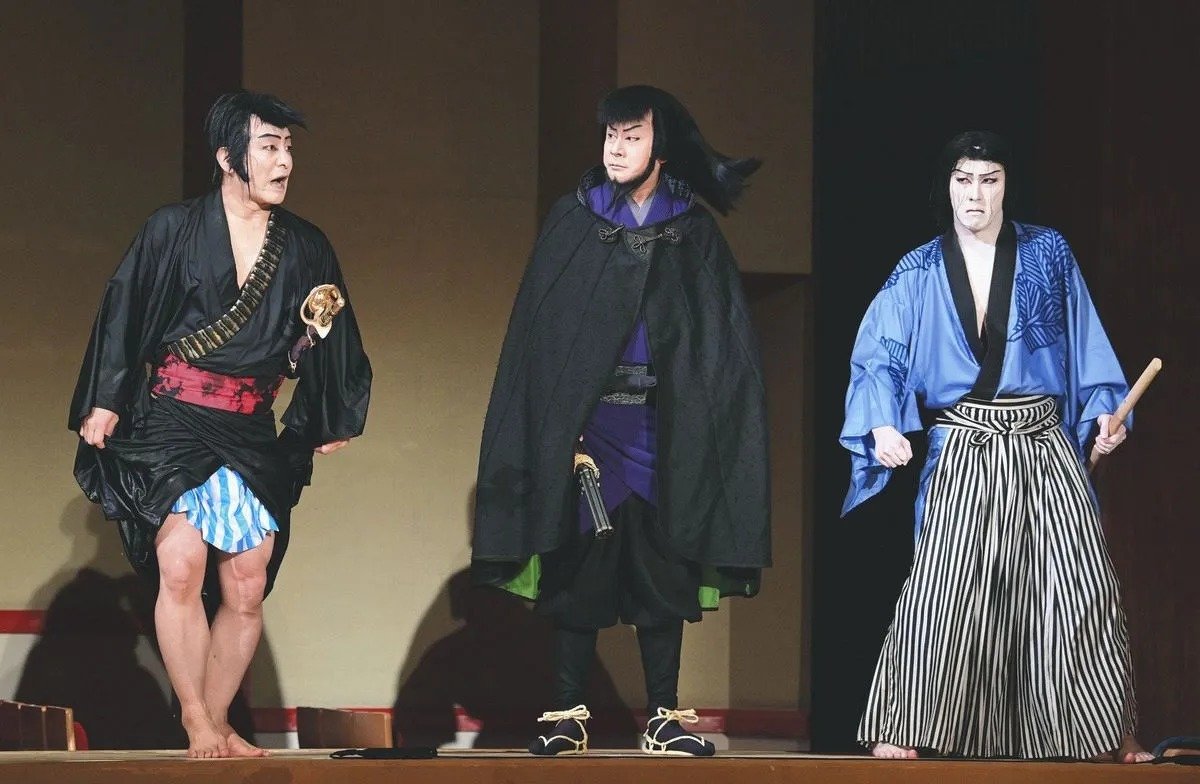The Kabuki Experience of Lupin the Third
The Kabuki play of Lupin the Third is an experience unlike anything I could’ve imagined, let alone hope for.
With a franchise this long-running, to reinvent the characters in a completely new format is no easy feat. Yet, the production manages to encapsulate the drama and playfulness of the Kabuki platform, while still keeping the heart of the characters and cast we’ve grown to love.
The play is full of Lupin’s usual shenanigans; there are artifacts that can bring destruction to the world, Fujiko is never completely on our side, Lupin uses disguises to sneak around, and there is even a live opening sequence and typewriting to give the title of the show.
From the music to the stage design, Lupin being presented as a Kabuki play took no shortcuts or restraints to bring mangaka Monkey Punch’s world to the stage.
In terms of tone, Lupin’s adventure in Kabuki resembles something closer to his Part 2 self (he even wears a red jacket, which is a nice touch on costume design). Kataoka plays him never too seriously, yet always a step ahead of Zenigata, the police force, and Goemon. Everyone plays their part so well that it’s easy to feel as though you’re watching in on a one-off episode or experimental special. If Lupin and the crew ever went to 16th century era Japan, the story here proves that it can work with ease.
Where the Kabuki format shines most might be in its production design and sets. The show takes an assortment of locations and uses all the tricks and magic that the stage can provide. An absolute highlight takes shape in the closing of the second act, when Lupin and Goemon have a showdown at a waterfall. Water falls onto the stage and both Kataoka and Matsuya Onoe get drenched in their battle (if you are sitting in the front row, there is a high likelihood that you will indeed get wet). In my showing, the entire audience, who had been quiet through the show, finally gasped and cheered. The dedication and choreography this fight took on was something no-one expected. The absolute highlight of the show.
With the ending of the play in mind, the world of Lupin is now set to the status quo. Should a follow up Kabuki be made, I’d love to see Jigen have a larger role in the story. This particular Kabuki is largely a format for Lupin and Goemon to shine, which given the era for the premise, makes sense.
In addition, the performance also makes it clear that the gang are interacting with Goemon Ishikawa the First here ─ including historical references to the person (a decoy is even executed by being boiled to death).
Overall, I was impressed by the Lupin the Third Kabuki. The performances were electric, perfectly encompassing the behaviours of the characters. The set designs went above and beyond my expectations, with choreography and set pieces that rival what I would witness on Broadway back in the U.S; and the story felt as though it was ripped straight from the series it’s based on.
I look forward to the future of Lupin, both in the world of animation, as well as its new life on the Kabuki stage!
We’ve included photos of the Kabuki play book below, which thankfully, included a full translation into English!
Before you do take a look through, though, a big thank you to Jaxson for all of his hard work writing up this review, and for taking all of the photos you see below. It’s worth noting, if you’re wondering why Jaxson didn’t include photos or videos from his experience at the Kabuki during the performance itself - out of respect for the actors and crew, audiences were asked not to film the performance. Of course, Jaxson abided by this! Hopefully even without seeing everything mentioned here, these impressions and the scene-by-scene below can at least help you feel like you were almost there!
If you wish to follow Jaxson on social media, you can check out his Twitter / X account here, Instagram here, and subscribe to his YouTube channel here (and don’t forget to check out The Shoemaker Power Hour, his upcoming video series)!






























